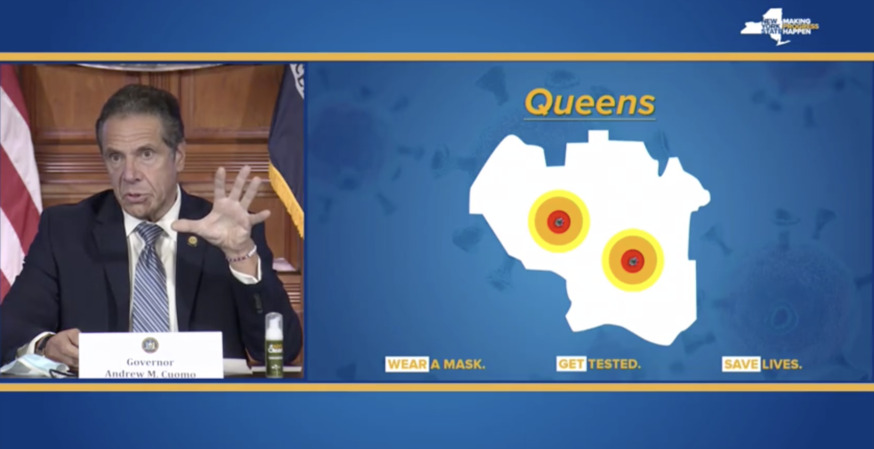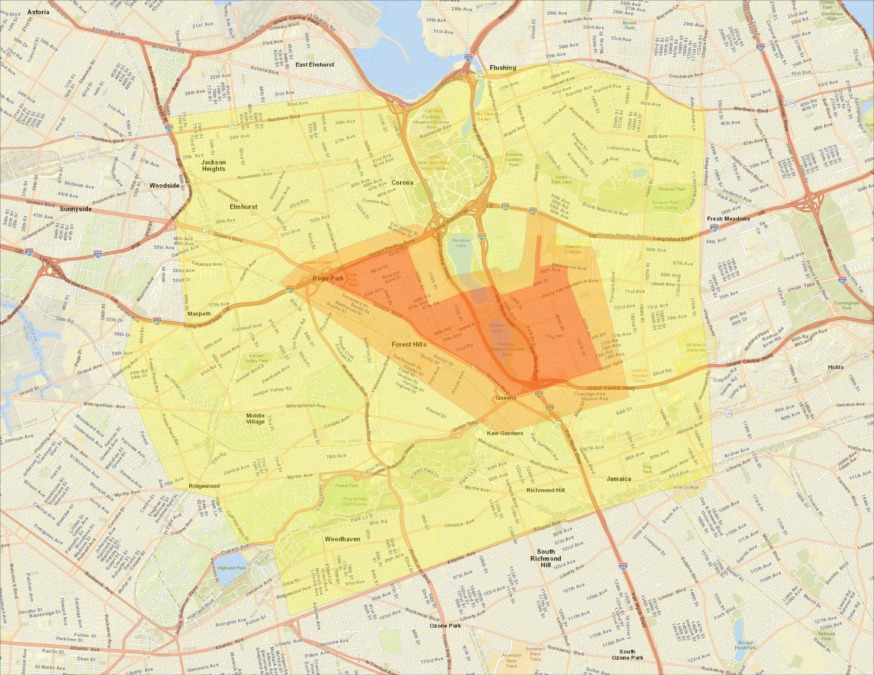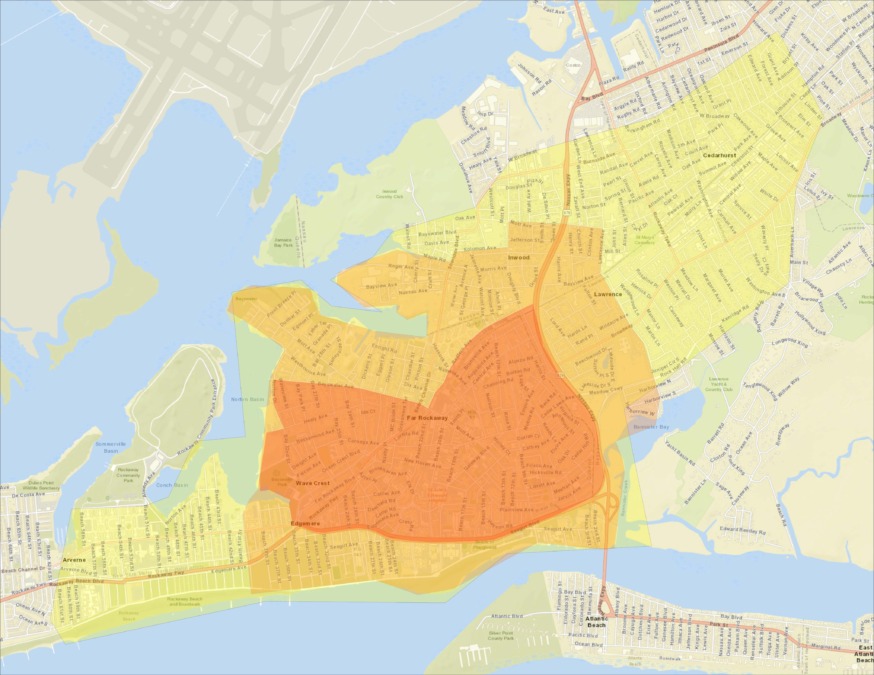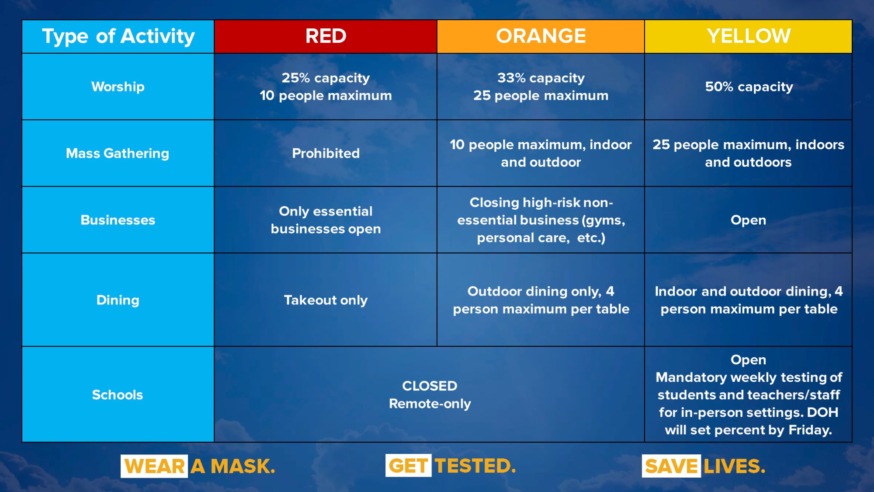
Governor Andrew Cuomo displayed a map of the Queens COVID clusters
Oct. 6, 2020 By Allie Griffin
Governor Andrew Cuomo unveiled a plan today to close nonessential businesses and enforce other restrictions in COVID-19 clusters popping up statewide.
The news came after Mayor Bill de Blasio said he would close down the businesses in hotspot ZIP codes — including Kew Gardens, Kew Gardens Hills and Far Rockaway — as early as tomorrow once the governor gave the okay.
However, Cuomo’s plan relies on COVID-19 testing data instead of ZIP codes. He has categorized areas in and near hotspots into three colors and levels of restrictions — red, orange and yellow.
Nonessential businesses in red areas — which have the highest density of cases — will close as early as tomorrow. Cuomo said local governments will make the call as to when the implement the closures and additional regulations. They can decide to close the businesses as early as tomorrow, but must do so by Friday.
Parts of Kew Gardens, Briarwood, Kew Gardens Hills, Forest Hills and Rego Park are within one red zone in Queens, according to a map released by the governor. A second red zone cluster encompasses much of Far Rockaway.
De Blasio has yet to announce when he will close nonessential businesses in the above neighborhoods and implement the additional measures. This morning he said he was prepared to shut them down based on ZIP codes by Wednesday morning, however the state’s last minute release of the map zones could delay the closures.
The mayor’s press secretary said the city will likely implement the closures and restrictions on Thursday, as they do outreach to the affected communities tomorrow.


In addition to business closures, neighborhoods in the red zones must abide by a number of new restrictions as well. Restaurants in red zones will be limited to takeout only, mass gatherings are prohibited and houses of worship will be limited to 10 people maximum.
Schools in both the red and orange zones must close if they haven’t already today. De Blasio’s press secretary said any necessary changes to school closures or openings will happen Thursday.
Orange areas are just outside the main cluster and are in danger of the virus spreading to them, Cuomo said. High risk nonessential businesses, such as gyms and personal care services, along with indoor dining will close within the orange zone. Houses of worship in the orange zone can have 25 people max in their ceremonies.
The yellow zone, “a precautionary zone,” is the furthest ring and has the least restrictions. All businesses will remain open, as well as schools and indoor dining — but with restrictions. Schools must test students and teachers doing in-person learning each week under the state plan.
The restrictions will be in effect for at least two weeks, the governor said.

Other hotspots in the state include a large cluster in Brooklyn and clusters in Binghamton, Orange County and Rockland County.
